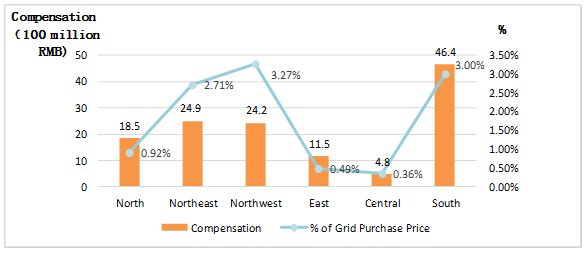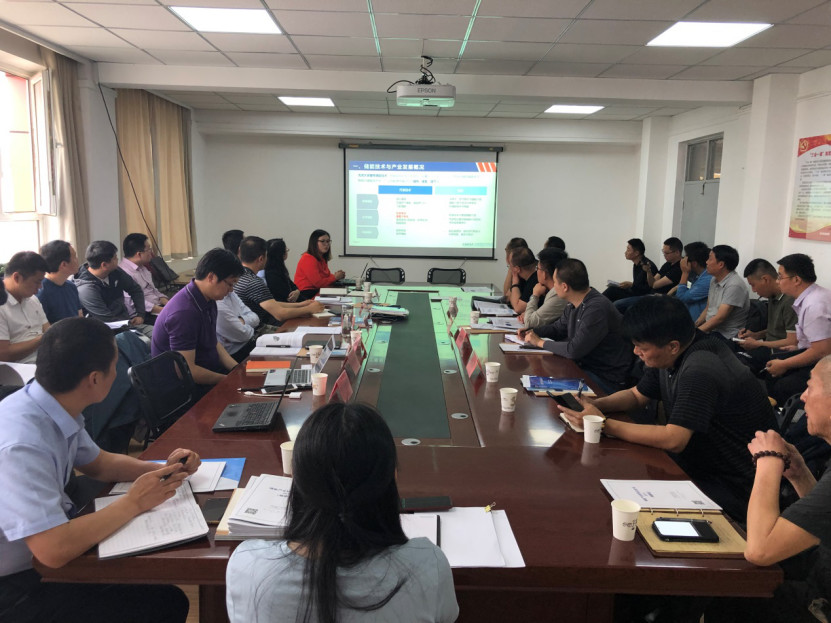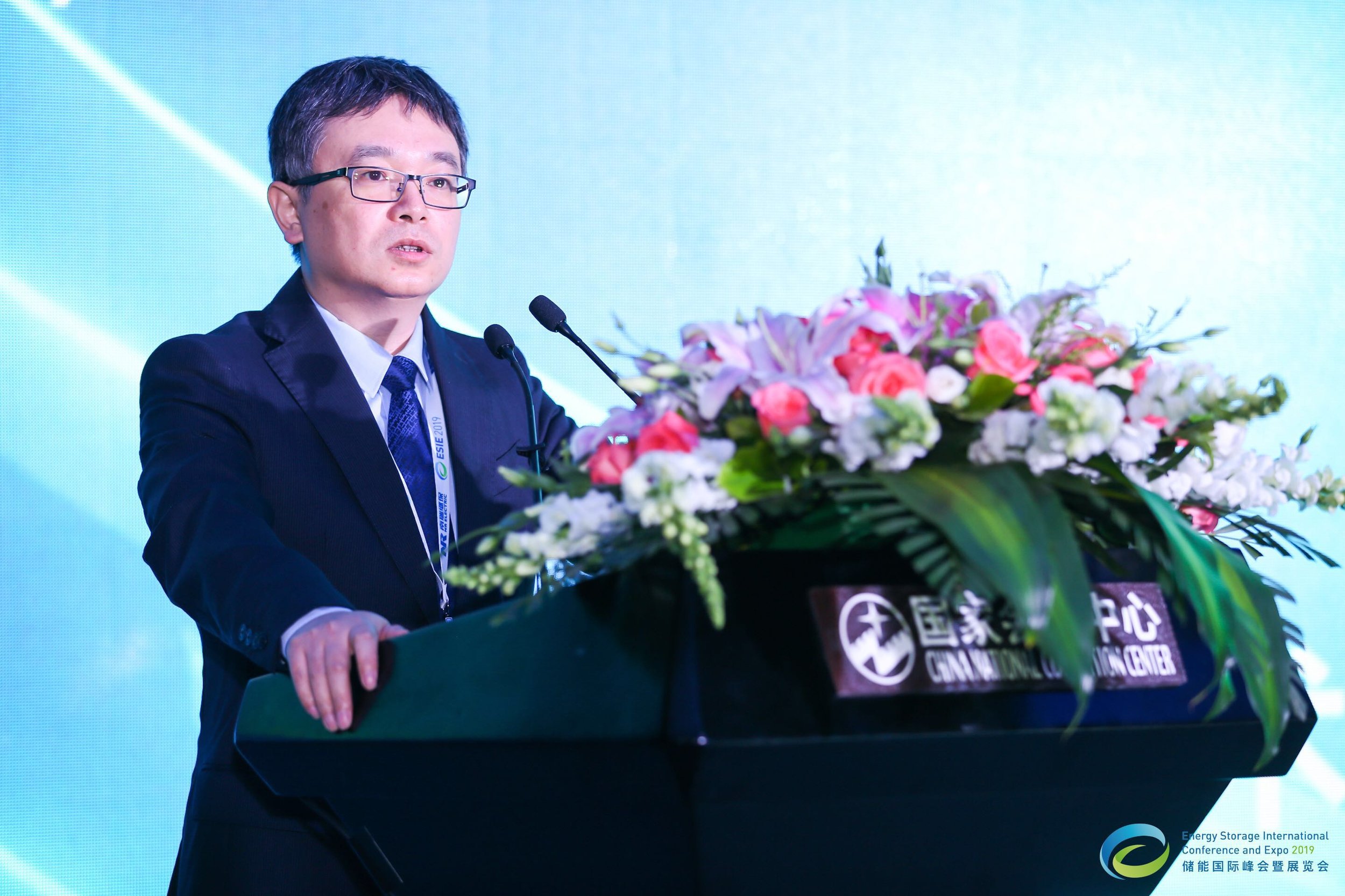According to statistics from the China Energy Storage Alliance Global Energy Storage Database, in the first half of 2019, China’s operational energy storage project capacity totaled 31.4GW, an increase of 5.7% compared to the first half of 2018. Of this total, newly operational electrochemical energy storage projects totaled 116.9MW, a decrease of 4.2% compared to the first half of 2018. Though the rate of growth has decreased since 2018, this is not abnormal for an emerging industry, particularly in a market such as the domestic Chinese market where a fully developed market mechanism and industry standards have yet to take shape. The negative influence of the numerous energy storage system accidents that have occurred in South Korea and other countries, as well as the massive increase in new capacity during 2018 due to a series of large-scale grid-side projects are also factors that have influenced 2019 growth statistics, yet do not suggest that the industry is unprepared for stable, long-term growth.
Below, CNESA’s research department looks back at nine major events in China's energy storage industry that occurred in the first half of 2019.
1. Four Government Bureaus Release Cooperative Energy Storage Action Plan (2019-2020)
On June 25, 2019, the National Development and Reform Commission, Ministry of Science and Technology, Ministry of Industry and Information Technology, and the National Energy Administration jointly released the 2019-2020 Action Plan for the ‘Guiding Opinions on Promoting Energy Storage Technology and Industry Development.’ The plan is intended to help implement the goals of the Guiding Opinions on Promoting Energy Storage Technology and Industry Development released in 2017, promoting growth of energy storage technology, the healthy development of the industry, and supporting the use of safe, efficient, and low-carbon energy systems.
The action plan includes six work items, which are as follows:
· Strengthen innovative energy storage technology R&D and increase intelligent manufacturing
· Develop and implement policies that encourage technology and industry development
· Expand the use of pumped hydro storage
· Promote energy storage project demonstrations and applications
· Promote energy storage applications for electric vehicle batteries
· Accelerate the standardization of energy storage
The action plan provides clear and specific tasks for energy storage industry development in the “post-Guiding Opinions” period, helping realize the goal of transitioning energy storage from R&D to early-stage commercialization as outlined in the Thirteenth Five-Year Plan, and creating a foundation for the Fourteenth Five-Year Plan goal of further developing from early stage commercialization to a large-scale energy storage industry.
2. Two Grid Companies Announce their Own “Guiding Opinions”
In early 2019, China Southern Grid and China State Grid released the China Southern Grid Co. Guiding Opinions on Promoting Electrochemical Energy Storage Development (Draft for Comment) and the China State Grid LLC Guiding Opinions on Promoting the Healthy Development of Electrochemical Energy Storage. Each policy incorporates electrochemical energy storage into the planning and grid network development of its respective corporation.
Current business models for grid-side energy storage projects puts the burden on grid companies. Therefore, these companies hope energy storage can become an effective asset generating profits through T&D pricing. Yet China’s two power grids do not necessarily support such a model in the same way. For China Southern Grid, only projects that can ensure system safety, can act as investment substitutions, and can provide emergency support can be considered effective grid assets, while China State Grid has yet to define what specific purpose energy storage should have on the grid side.
3. The National Development and Reform Commission and National Energy Administration Decide Not to Include Energy Storage in T&D Pricing Costs
On May 24, the National Development and Reform Commission and the National Energy Administration released the Transmission & Distribution Pricing Cost Supervision Methods (referred to as the Methods below. The Methods were first introduced in a trial version in 2015. The revised version incorporates experiences derived not only from this trial period, but also many observed from foreign T&D regulators. The Methods state that the costs of pumped hydro storage stations, electrical energy storage installations, and similar facilities that are not related to grid company T&D services cannot be included in T&D pricing. The policy also states that the depreciation costs of energy storage assets which are transferred to the grid free of charge once a leasing period has finished should also not be included in T&D pricing. Such policy terms are an indicator that if in the short term no other profit models appear, then the future development of grid-side energy storage is certain to be impacted.
Earlier this year grid companies had expressed a desire to slow the construction of new large-scale grid-side energy storage projects. Although the Methods has caused grid companies to lose some of their enthusiasm for investment in grid-side energy storage projects, in a mature, competitive market, fair and balanced rules are needed to foster vitality. To bring about such conditions, regulators must put greater effort towards creating a market mechanism, thereby allowing all market players to invest, construct, and operate projects according to proper regulations and generate profits by way of a mature electric power market.
4. Grid-side Energy Storage Market Remains Warm
On April 23, the Furong energy storage project in Changsha, Hunan province successfully connected to the grid, marking the completion of the first stage of the Changsha grid-side demonstration project. The project came after the completion of two other 100 megawatt scale projects in Jiangsu and Henan provinces last year. The 120MW/240MWh Hunan grid-side energy storage demonstration project provides critical support for the Changsha power grid. The project will be completed in two phases, the first at a scale of 60MW/120MWh, with energy storage stations located at three 220 mv substations in Changsha’s Furong, Langli, and Yannong regions. The recently completed Furong station is currently China’s largest indoor energy storage station.
Last year, China’s grid-side energy storage sector saw massive new growth. Although the release of the Transmission & Distribution Pricing Cost Supervision Methods in the first half of this year dashes hopes for grid companies to include energy storage in T&D pricing, the announcement of new project tenders and development in regions such as Hunan, Jiangsu, Zhejiang, Beijing, and others signifies that the market is still likely to continue growing. Also of note are the differences in each project’s choice of technology, construction method, business model, and other characteristics. For example, the Jiangbei project in Nanjing, Jiangsu province is equipped with second-life batteries. The Suzhou, Jiangsu grid-side project is designed with “energy storage station+data center+N” functionality. The Jinling grid-side storage project in Huzhou, Zhejiang is equipped with lead-acid batteries. The Huairou, Beijing grid-side project uses an advanced battery monitoring technology and fire suppression system, providing the system with an extended lifespan and an increased level of safety.
5. Guangdong Energy Storage Frequency Regulation Changes from Blue Ocean Market to Red Ocean Market
In August 2018, the South China Energy Regulatory Bureau released Market Transaction Rules for Frequency Regulation Ancillary Services in Guangdong (Trial) (hereafter referred to as the Rules). The Rules allow energy storage systems to work in conjunction with generation units as one entity to provide frequency regulation ancillary services. Just four months after the implementation of the policy in September 2018, China Southern Grid’s first combined energy storage and thermal generation project went operational—the Yunfu power plant AGC frequency regulation and energy storage project in Guangdong.
The trial implementation of the Rules marked the beginning of a blue ocean market for AGC frequency regulation in Guangdong. According to CNESA Global Energy Storage Database statistics, as of June 2019, 25 energy storage projects participating in frequency regulation have been announced in Guangdong, with a total scale of 364MW. Of these, the largest project is the CR Power Haifeng power station project, at 30MW/15MWh. Following a year of implementation of the policy, available capacity is now extremely limited and competition is fierce. Aside from frequency regulation pioneers such as Ray Power and CLOU, other market players include Zhiguang, Tuna New Energy, SCER, Guangte Electric, WLY, and others. What was once a blue ocean market has quickly turned into a red ocean market.
Considering these conditions, many companies have begun reevaluating the market. During a CNESA forum hosted in Guangdong in late July of this year, many companies expressed frustration at the numerous difficulties they face. One difficulty arises from an increasingly fierce price war leading to greater investment risks. Another difficulty comes from the power stations themselves. As many companies reported, some power stations have required project owners to share part of the costs for frequency regulation compensation fees, once again adding to investment risks. Faced with these problems, many companies have decided to slow their business activity observe the market. Current ancillary service market rules and an unsteady relationship with power station owners have put energy storage companies in a weakened state, highlighting how the industry is still quite far from a truly fair, competitive market.
6. Suzhou Provides Industrial Park Energy Storage Projects with 0.3RMB/kWh Subsidies
On March 24, the Suzhou Industrial Park Management Committee released Measures for the Management of Special Guiding Funds for Green Development of Suzhou Industrial Parks, which provides subsidies for projects which provide energy saving modifications, cyclical economic practices, internet of energy technologies, and other environmentally friendly measures for industrial parks. For operational distributed natural gas and energy storage projects, a three-year subsidy is provided according to the amount of electricity generated, with each kWh compensated with 0.3 RMB. The subsidy policy hopes to encourage the creation of behind-the-meter energy storage projects that will help lower reliance on public utilities, while also lowering costs through peak shaving.
The government’s lowering of industrial and commercial power prices to close the gap between peak and off-peak prices, as well as the increased costs for safety and grid connection have had a major impact on project profits. The Suzhou industrial park subsidies can benefit by helping projects generate profits, shortening investment return periods, and maintaining developer interest in project investment.
7. Xinjiang Launches Generation-side Combined Solar PV+Energy Storage Project Trials
After two rounds of revisions, on June 28, the Xinjiang Regulatory Office of the National Energy Administration released the Notice on the Development of Generation-side Solar-plus-storage Projects (hereafter referred to as the Notice). The Notice calls for the deployment of solar-plus-storage demonstration projects in four regions of southern Xinjiang. The energy storage systems are specified to have a capacity no less than 15% that of the solar PV system, a duration of no less than 2 hours, and a capacity no greater than 350MW. The demonstration projects are to be completed before October 31, 2019. Beginning in 2020 and continuing for a period of five years, each solar PV station is required to add an additional 100 hours of priority generation. The Notice also stipulates that power prices for the solar PV+energy storage should be determined by current price policies for solar PV stations and should receive the same subsidies that are provided to current qualifying solar PV stations. The solar PV+energy storage stations are also encouraged to participate in the ancillary services market. Also of note, and unlike previous drafts of the Notice, the final version has also included requirements for energy storage system safety, such as a battery protection system, automatic fire alarm, and fire suppression system.
Following the release of the Notice, the Xinjiang Development and Reform Commission and Xinjiang Regulatory Office of the National Energy Administration released the Notice on the Release of the First Batch of Generation-side Combined Solar-plus-storage Projects, which contained 36 projects developed by 10 different companies with a total energy storage capacity of 221MW/446MWh.
8. China Tower Plans Purchase of 5GWh of Second-life Batteries
In order to increase their use of second-life batteries, China Tower Co. announced plans to acquire 5GWh of second-life batteries to replace nearly 150,000 tons of lead-acid batteries. As the largest user of retired batteries for second life usages in China, China Tower ceased all purchase of lead-acid batteries in 2018 in favor of second-life batteries. The company reported ownership of 1,954,000 telecom towers (not including indoor units) as of the end of June 2019, an increase of 4.0% in comparison to the first half of 2018. Each of these towers contains its own energy storage system, with total capacity exceeding 17.1GWh. In addition, with 5G service infrastructure now beginning to proliferate, many new towers are being built while old towers are being retrofitted, meaning that China Tower is likely to require an event greater number of energy storage batteries in the near future.
According to CNESA’s Electric Vehicle Battery Recycling & Second-life Usages report, by 2025, China’s new second-life battery capacity is predicted to reach 33.6GWh. Despite a promising future, at present there are still many challenges for the second-life battery market. Some of the many issues include costs, safety, business model maturity, and battery performance, among others. Before a fully developed second-life battery market can form, more research and development, explorative projects, and stakeholder coordination is needed.
9. Battery Energy Storage Safety Issues Raise the Alarm
Over the past two years, a number of electric vehicle fires around the world have raised consumer concerns. According to data from the State Administration for Market Regulation, in 2018, more than 40 fires involving electric vehicles occurred in China. Such accidents have raised concerns among many consumers about the safety of battery systems. Most current electric vehicle systems rely on lithium-ion batteries. The primary cause of fires for such batteries is thermal runaway. The causes of thermal runaway can be varied and complicated. In the stationary battery energy storage sector, lithium-ion batteries are also the most frequently used technology. According to CNESA Global Energy Storage Database statistics, as of June 2019, 86% of global operational battery storage project capacity utilized lithium-ion batteries.
Electric vehicle battery fires and stationary energy storage battery fires have brought more attention to the need for safety research, evaluation, and standardization. From July 18 to 20, 2019, the University of Science and Technology of China, China Energy Storage Alliance, and the Chemical Safety Committee of the Chemical Industry and Engineering Society of China co-hosted the first annual International Lithium-ion Battery Fire Safety Seminar in Hefei. The seminar featured discussions on thermal runaway, heat transfer and numerical modeling, capacity fading and lifespan, thermal control, fire suppression, and many other topics in energy storage system safety. Such platforms are beneficial to ensuring that energy storage development will be able to prioritize safety.
When it comes to safety standards, in October 2018, the National Energy Administration released the Letter Addressing the Collection of Suggestions for the “Action Plan for Strengthening Energy Storage Technology Standards.” The plan emphasizes the need to intensify standardization of energy storage technologies. From the standpoint of system applications, standards must be developed that cover the planning, design, operations, and maintenance of energy storage systems, as well as the equipment, components, and materials used in their construction. The plan seeks to support the implementation of energy storage standards and improvement of energy storage technologies.
In March 2018, CNESA was approved by the Standardization Administration of China to be a part of the second batch of group standards developers. Since then, CNESA has developed nine energy storage standards. Of these, Evaluation Specifications for Electrochemical Energy Storage Systems was released in May of 2019. This standard focuses on factors such as safety, performance, and environmental suitability to evaluate the stability, safety, and reliability of electrochemical energy storage systems. CNESA is also working with third party testing and certification bodies to respond to industry needs for research and development of industry standards. In the future, CNESA will continue to push for the advancement of energy storage standards with the help of industry partners, working together towards a safe, sustainable future for energy storage.


































